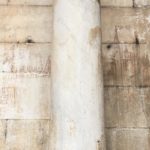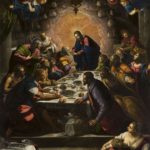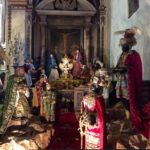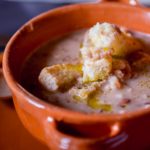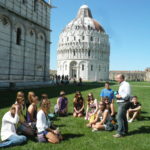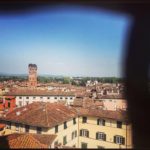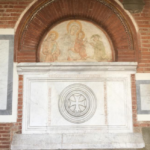
A curious story regarding the tomb of the merchant Tignosini
Just a few steps away from the tombstone commemorating Adele, at the corner of the second cloister near the entrance to the Church of San Francesco, visitors will note an old medieval tombstone with a lunette overhead that has one of the oldest frescoes in Lucca. The tomb dates 1274 and contains the remains of a merchant of Lucca, who was named Tignosini. In the chronicles of San Francesco, compiled in the 17th century by the archivist of the convent, there is a lot of information and news regarding the foundation of the convent, much of which is unpublished, strange, and sometimes, quite disturbing. The rich merchant Tignosini, who was a resident in the parish of San Frediano, died in 1286. He had expressed the desire of being buried in the Church of San Francesco in his will, probably...
